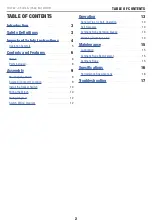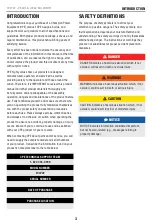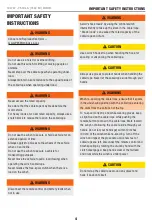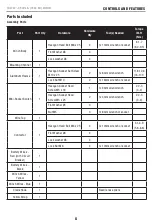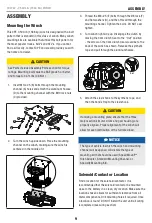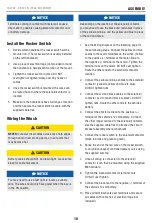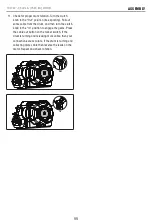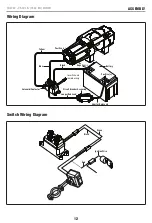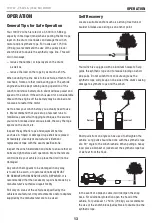
100722 - 3500 Lb. (1588 kg) WiNch
ASSEMbLY
9
ASSEMbLY
Mounting the Winch
This CPE 3,500 lb (1,588 kg) winch is designed with a bolt
pattern that is standard in this class of winch. Many winch
mounting kits are available that utilize this bolt pattern for
the most popular trucks, SUV’s and ATV’s. If you cannot
find a kit locally, contact CPE and we will provide you with
the name of a dealer.
cAUTiON
See Parts Included Assembly Parts section for torque
ratings. Mounting bolts must be SAE grade 5 or better
and torque to 34 ft. lbs (46 N.m).
1. Insert M10×25 (B) bolts through the mounting
channel (A) holes and attach the aluminum hawse
(D) to the mounting channel with the M10 lock nuts
(C) provided.
B
E
F
G
C
D
A
2. Turn the winch upside down. Place the mounting
channel on the winch, making sure the winch is
centered in the middle of it.
3. Thread the M8×25 (E) bolts through the Ø8 lock (F)
and flat washers (G), and then thread through the
mounting channel. Tighten the bolts. DO NOT over
tighten.
4. Turn winch right side up. Disengage the clutch by
moving the Cam Clutch Gear to the “Out” position
- the arrow on the Cam Clutch Gear would be to the
back of the winch as shown. Release the synthetic
rope and pull through the aluminum hawse.
Out
5. Attach the clevis hook to the synthetic rope, and
then the hand strap to the clevis hook.
cAUTiON
If utilizing a mounting plate, ensure that the three
major sections (motor, drum and gear housing) are
properly aligned. Proper alignment of the winch will
allow for even distribution of the full rated load.
NOTicE
The type of vehicle to which the winch and mounting
channel will be applied, will dictate the type of
mounting kit that should be used (Speed Mount™
Hitch Adapter, Standard Mounting Channel, or
Specialty Mounting Kit).
Solenoid/contactor Location
Find a location for the solenoid/contactor. It is
recommended that the solenoid/contactor be mounted
close to the battery in a clean, dry location. Make sure the
location chosen allows for sufficient clearance from all
metal components. Drill mounting holes if required. Once
a location is found, DO NOT install the unit until all wiring
is completed (see wiring section).


